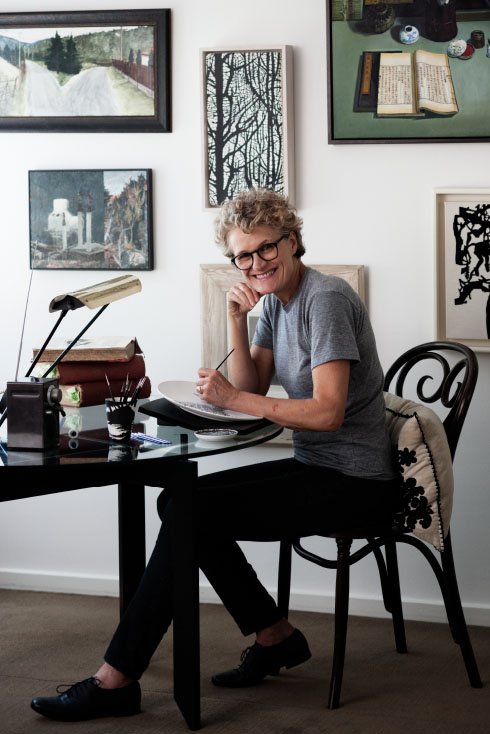Five Minutes with... Susan Hipgrave
Susan Hipgrave, White Cockatoos. Photo: Craig Wall
Susan Hipgrave's practice involves hand-painting intricate lines onto porcelain, detailing how remarkable our everyday surroundings are. Drawing inspiration from nineteenth century German encyclopaedias, Hipgrave's work is both detailed and captivating. We spend five minutes getting to know Susan and the creative process behind her artwork as well as her solo exhibition Nature Studies.
Nature Studies will be showing at JamFactory Collect from 5 May - 4 June.
Can you tell us a bit about your background? What about fine line painting appealed to you, and do you think studying graphic design had any influence on this?
A degree in Graphic Design at Swinburne, Melbourne lead me down a long path as an Art Director in advertising. It was seen as a craft, but as the job became computerised, I felt I needed to do something more hands-on and creative for myself. I’ve always loved typography and logo design, and I think this love definitely influenced my practice. When I started, I was painting strong, black graphics. Then I began painting ferns. This lead me to historical illustrations, and as I progressed, my brushes got finer, and the line work more detailed. Painting on porcelain rather than paper or canvas connects me to a tradition that goes back centuries.
What inspires you to continue to paint flora and fauna in your works? Do you think these will always be the main themes of your practice?
An old friend gave me a set of 19th Century German encyclopaedias on the natural world and I had a eureka moment. I was struck by the illustrations and knew I had found my practice. In their time, these illustrations were the only way to document plants, birds and animals so consequently, they had to be precise, detailed and specific. But where botanists and scientists saw them as reference, I saw them as a source. With the invention of the camera, these books were put aside and forgotten and I delight in reworking each illustration, adding feeling and life to create work that is contemporary.
Susan Hipgrave. Photo: Craig Wall
“With the circle as my canvas, the plate will always be for me, a portal into the bigger picture that is nature.”
Susan Hipgrave working on a painting. Photo: Craig Wall
Nature Studies is your upcoming solo exhibition at JamFactory, what do you hope the audience takes away from the exhibition?
I like to think my work has strength and stamina in all its fine detail. I hope the viewer will be drawn into the work, and take the time to study each piece as one would in a research library - to appreciate the meditative brushstrokes, and be moved by the subjects.
Susan Hipgrave, Planthoppers. Photo: Craig Wall
Where do you see your practice evolving over the upcoming years? Can you see yourself using an alternative medium to plates?
I think nature will always be the subject of my practice. Earlier this year I visited Singapore, and I was absolutely astounded by the flourishing roadside trees. But not just the trees - there’s a thriving sub canopy, a deliberate strapping onto branches with ferns and staghorns that all together create a complex 3-D green environment. Trees are my latest ‘deep dive’. With the circle as my canvas, the plate will always be for me, a portal into the bigger picture that is nature.
Susan Hipgrave, Summertime. Photo: Craig Wall
Susan Hipgrave, White-headed Sea Eagle. Photo: Craig Wall






